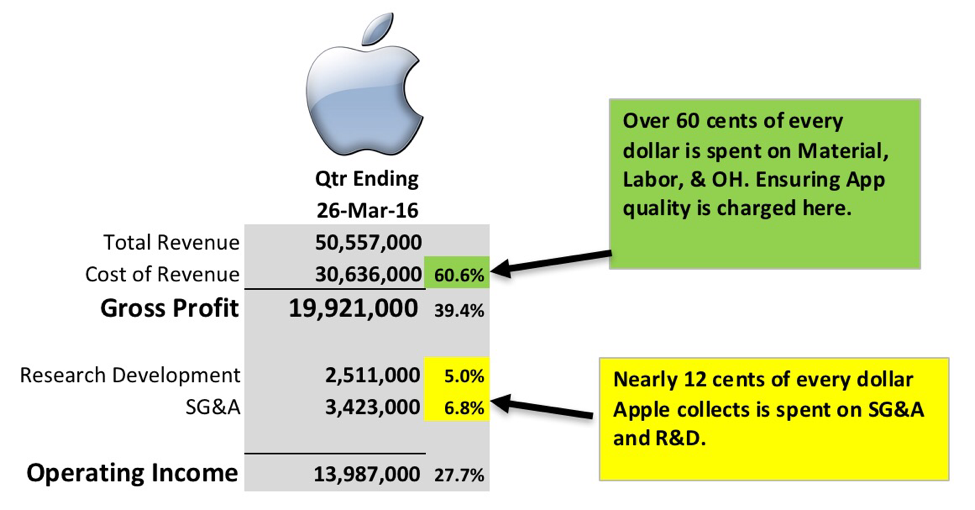But why 15 or 30%? Where do these amounts come from and what value is Apple giving in return?
The short answer is that Apple is allocating corporate costs to every product that they sell and this includes app downloads. Every corporation has to do it and everyone on the receiving end of such allocations questions what value they are getting in return. Every single product that a company sells will be allocated a piece of the following:
- Overhead – The cost of app review or quality control. Anything that ensures that apps are ready for sale and not harmful.
- Selling Costs – The cost of maintaining and running the app store specifically and general Apple marketing and advertising expenses.
- Administrative – The cost of Apple’s corporate bureaucracy
- R&D- The cost of designing a new and improved App Store.
I don’t blame developers for complaining about these costs because I’ve often been in the same place of pushing back against what I perceived as exorbitant corporate charges. But it’s the only way that a company can assess if they are really making money on their various products and endeavors. If a company doesn’t allocate these costs all the way down to the product level, they can blissfully go about their business selling products all the while running their cash reserves down paying for all the administrative costs. The allocations ensure that prices are never set too low.
At 30 cents on the dollar it seems that Apple is covering their costs and making a nice profit margin. At 15 cents? I’d be surprised if they are even at break even. It looks like Apple has made a fundamental shift in how they see Apps. Almost as if they don’t see apps as a profit center anymore. At 15% it appears that apps become a breakeven proposition in the name of selling more iPhones and iPads.
But it’s given me more than a few chuckles to see the complaining about the App Store charges. Newbies to the business world are complaining about these corporate charges just like the rest of us. Like a sophomore watching the freshman go through hazing, I can only sit back and enjoy the show.
*** Update - I should have made the point earlier that costs are allocated to sales revenue, not downloads. So it's irrelevant if these costs are allocated to initial app purchase or monthly subscription fees. The point is that Apple has to match it's costs in a period with all revenue that comes in that same period. Also, I'm aware that the 15% is only in limited cases, but this is still a huge shift for Apple. And like a dam that is starting to crack, momentum only goes one way.




 RSS Feed
RSS Feed